As a high-precision processing equipment, the slitting machine has penetrated into the core production links of many industries with its flexible cutting ability and customizable process design. The following is the adaptability analysis and typical application scenarios of slitting machines in different industries:
1. Packaging industry: the core tool of efficiency and diversification
1. Flexible packaging field
◦ Application materials: PE/PP film, aluminum-plastic composite film, silicone coated film (such as potato chip packaging bags).
◦ Technical requirements:
▪ The slitting of multilayer composites should avoid delamination (e.g. PET/AL/CPP structures).
▪ Anti-static treatment (electronic packaging film).
◦ Case: Automatic packaging production line online slitting, the speed can reach 800m/min.
2. Rigid packaging
◦ Application materials: cardboard, corrugated paper, sheet metal (e.g. aluminum cans).
◦ Special Requirements:
▪ Thick material slitting (>0.5mm) requires a high-pressure flat knife system.
▪ No burrs on the edges (food grade carton cutting).
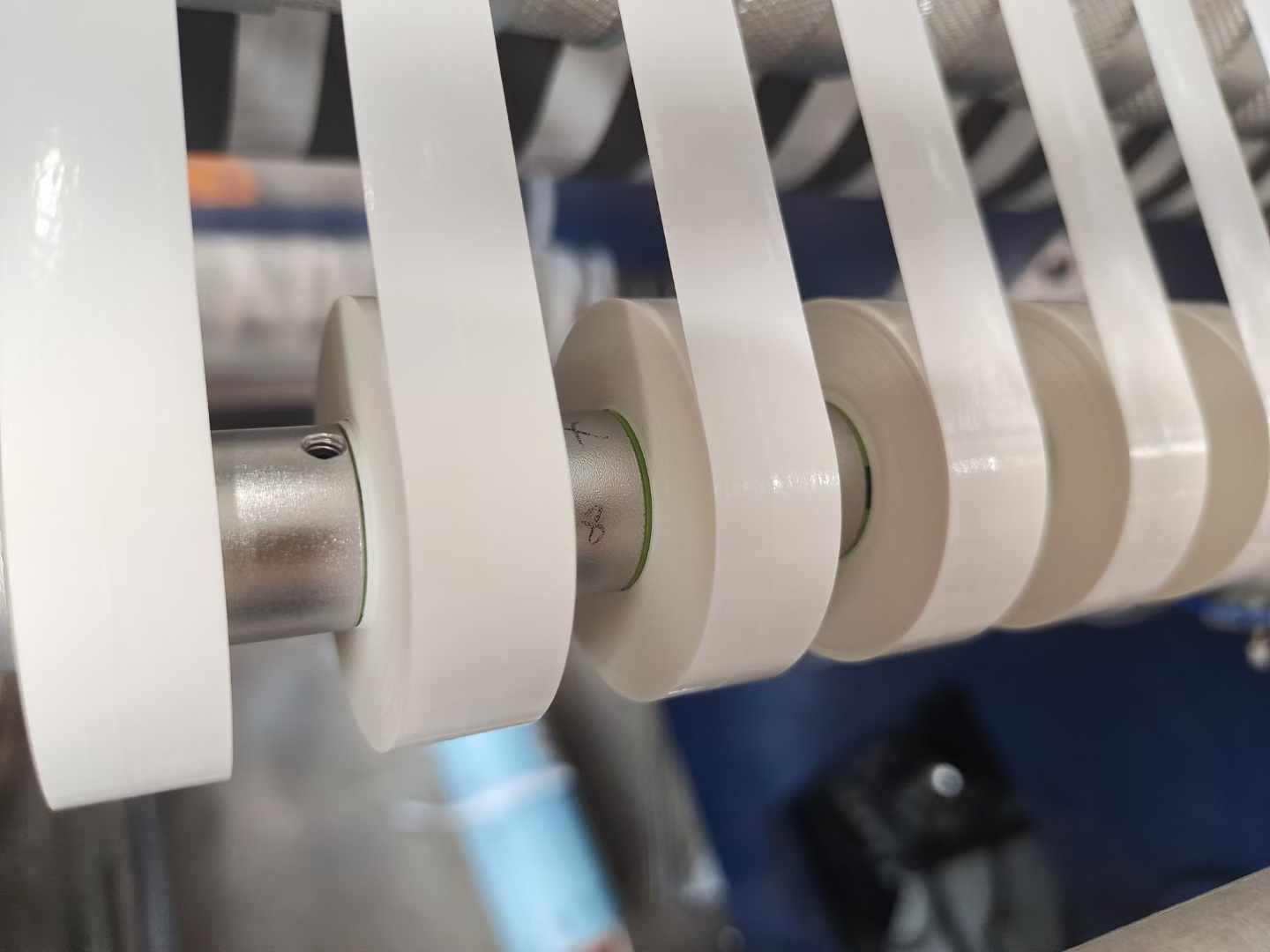
2. Printing industry: precision determines quality
1. Labels & Tickets
◦ Key Technologies:
▪ Micron-level accuracy (±0.05mm) ensures label alignment.
▪ Dust-free slitting (to prevent contamination of electronic labels).
◦ Innovative application: Avoid antenna breakage when RFID tag slitting.
2. Digital printing post-channel
◦ Inline slitting realizes the integration of "printing-die-cutting-slitting" to reduce manual intervention.
3. New energy industry: precision machining of high value-added materials
1. Lithium battery manufacturing
◦ Core Materials:
▪ Positive and negative electrode pieces (copper foil/aluminum foil coating and slitting).
▪ Separator (PE/PP ultra-thin film, thickness 5-20 μm)
◦ Technical difficulties:
▪ The slitting of the pole piece should be burr-free (to prevent the battery from short circuiting).
▪ Diaphragm slitting requires constant tension control (to prevent stretch deformation).
◦ Example: Laser slitting machine is used for tab forming (replacing traditional die cutting).
2. Photovoltaic industry
◦ Applied materials: backsheet film (TPT structure), EVA adhesive film.
◦ Special Processes:
▪ High temperature resistant blades (up to 80°C in EVA slitting)
▪ Static elimination (prevents the film from absorbing dust).
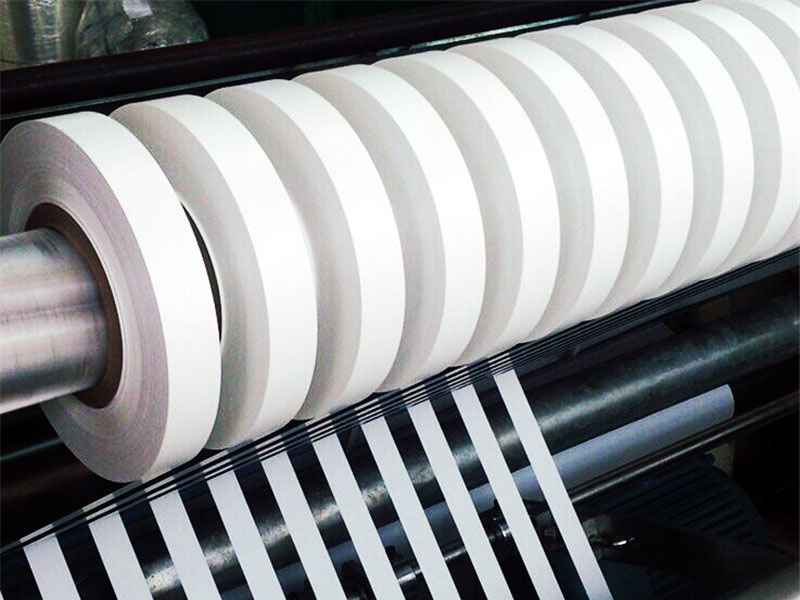
Fourth, the electronics industry: the ultimate requirements of micro scale
1. Flexible Circuit Board (FPC)
◦ The slitting width can be up to 0.1mm, and CCD visual positioning is required.
◦ The heat-affected zone should be controlled during the slitting of copper foil/PI film (to avoid melting of the adhesive line).
2. Optical films
◦ Applied materials: polarizers, brightness enhancement films, OCA optical adhesives.
◦ Technical barriers:
▪ Cleanroom environment (Class 1000 or less).
▪ Non-contact slitting (prevents scratches on the surface).
5. Medical and special materials: both safety and special performance
1. Medical materials
◦ Non-woven fabric slitting of surgical gowns requires a sterile environment.
◦ The slitting edge of the foil packaging (aluminum-plastic blister) should be smooth and particle-free.
2. Industrial special materials
◦ Carbon fiber prepreg slitting requires a low-temperature cooling system to prevent resin from sticking to the knife.
◦ Ceramic fiber paper slitting is equipped with a dust removal device.
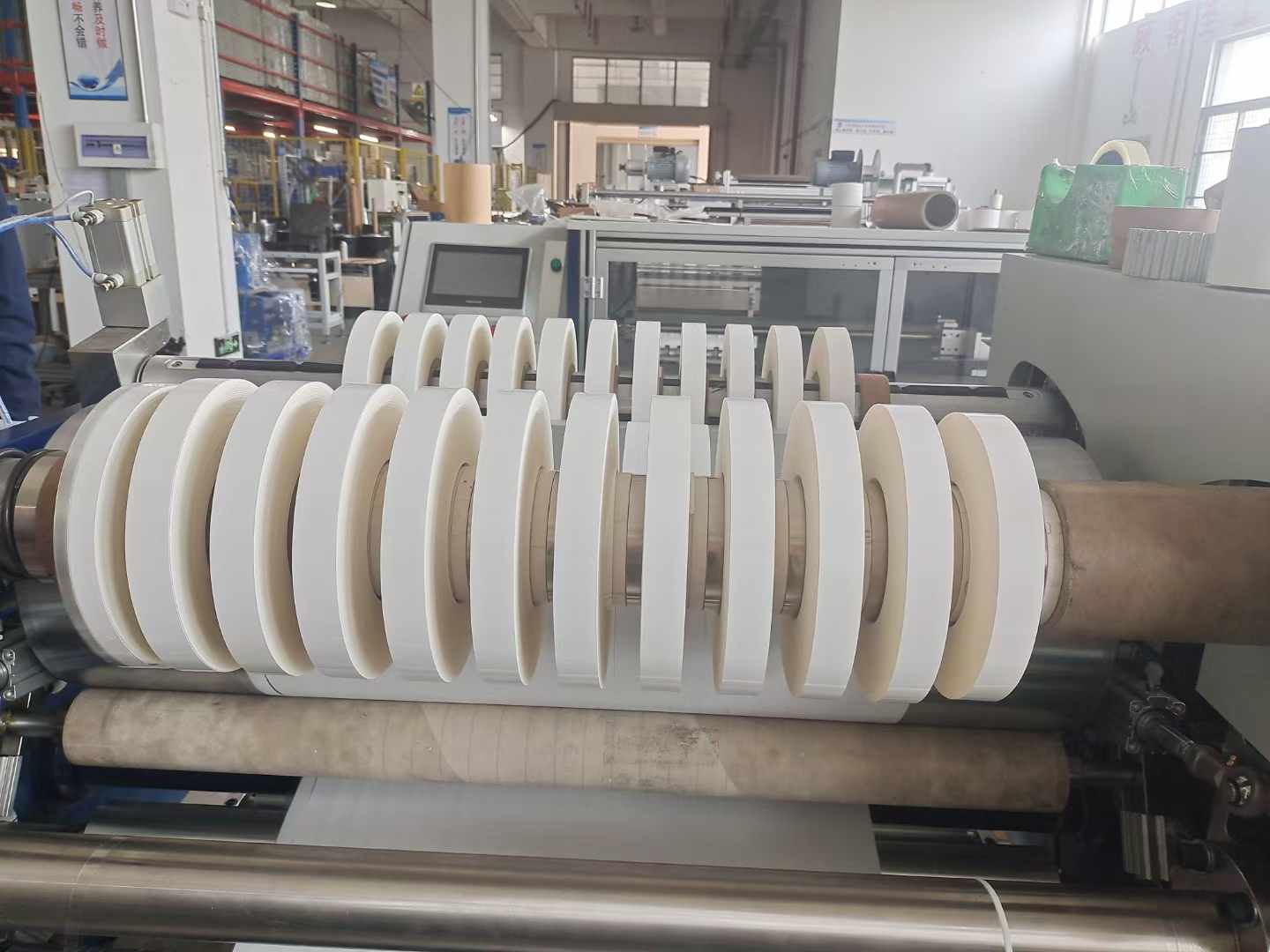
6. Comparison table of industry adaptability
| industry | Typical materials | Accuracy requirements | Special needs | Slitter type |
| Packaging (Flexible Film) | PE composite film | ±0.1mm | Anti-static, high-speed slitting | Round knife slitting machine + EPC |
| lithium battery | Copper foil/diaphragm | ±0.05mm | No burrs, constant tension | Laser slitting machine |
| Printed labels | PET self-adhesive | ±0.03mm | Dust-free environment | Precision flat knife slitting machine |
| photovoltaic | EVA adhesive film | ±0.2mm | High-temperature resistant tool holders | Hot knife slitting system |
| medical | Medical dialysis paper | ±0.1mm | Aseptic workshop | Fully enclosed slitting machine |
7. Future trends: cross-industry technology integration
1. New energy drive upgrade:
◦ Slitting requirements for proton exchange membranes for hydrogen fuel cells (ultra-thin perfluorosulfonic acid membranes).
2. Intelligent Scaling:
◦ The slitting machine is combined with the AI quality inspection system to provide real-time feedback on the cutting quality (such as 5G material slitting).
3. Green Manufacturing:
◦ Optimization of slitting process for biodegradable materials (PLA film).
summary
The key to the industry adaptability of the slitting machine is:
1. Matching of material properties (tension, thickness, chemical properties).
2. Balance between precision and efficiency (such as speed in the packaging industry, precision in the electronics industry).
3. Environmental and safety compliance (cleanliness, explosion-proof requirements, etc.).
For example, the new energy industry gives preference to high-end models equipped with laser dust removal and tension closed-loop control, while the traditional packaging field can focus on cost-effectiveness and flexibility in changing production.
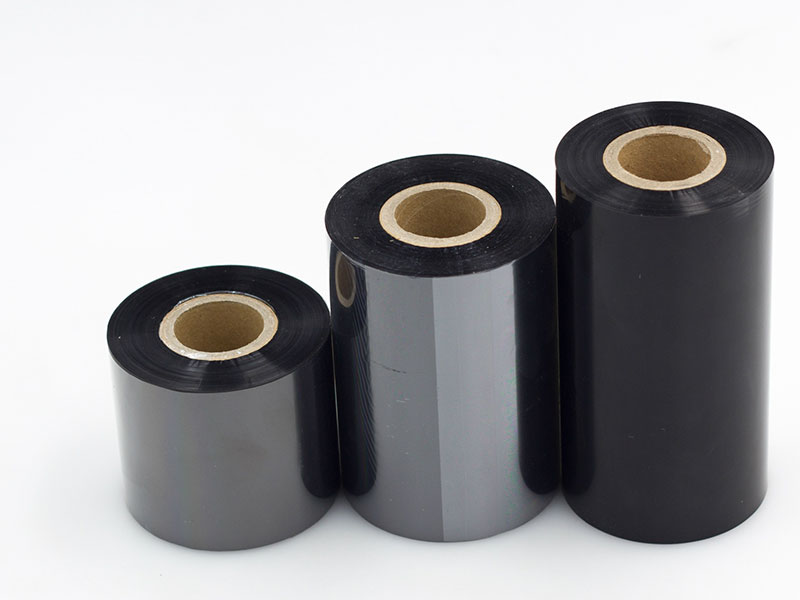
it uses precise cutting to cut out a more economical, more efficient and more environmentally friendly development path for enterprises.
29. December, 2025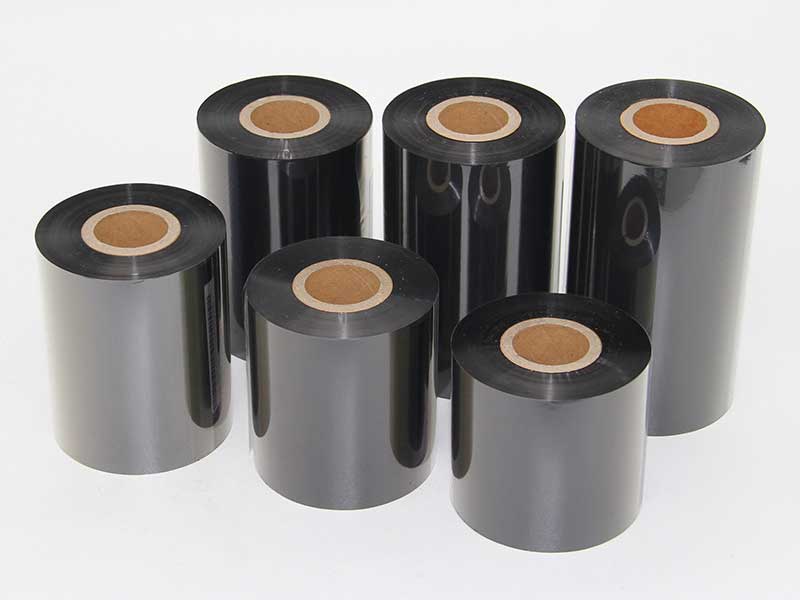
Modern high-quality ribbon slitting machine combines automation, intelligence and high precision:
29. December, 2025
Through precise local upgrading, process optimization and intelligent transformation, small and medium-sized enterprises can achieve a great leap in production efficiency with limited resources.
29. December, 2025
This seemingly simple piece of equipment is quietly changing the production efficiency standards of the entire industry.
27. December, 2025
A hot stamping foil slitting machine that can truly carry the trust of users must be the culmination of the following characteristics.
27. December, 2025